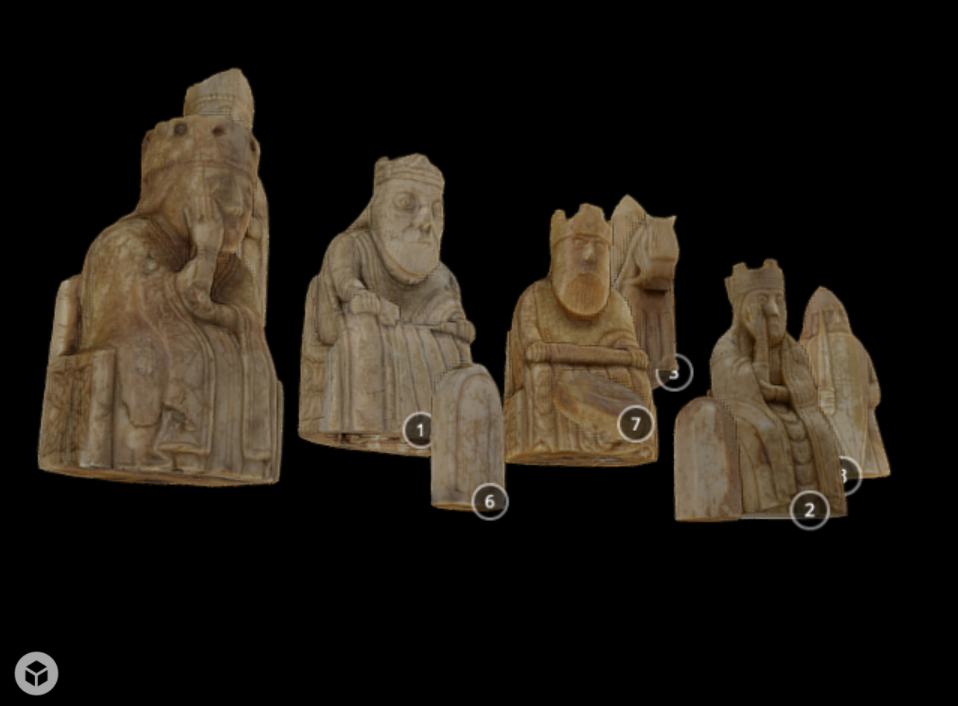 Inspired by the work of University College London and its 3D printing project MicroPasts, funded by the Arts and Humanities Research Council, the British Museum has been providing 3D models and printable files for anyone on the Sketchfab platform, simplifying the process for casual desktop 3D printer users to print objects on display at the museum.
Inspired by the work of University College London and its 3D printing project MicroPasts, funded by the Arts and Humanities Research Council, the British Museum has been providing 3D models and printable files for anyone on the Sketchfab platform, simplifying the process for casual desktop 3D printer users to print objects on display at the museum.
The British Museum, which was established 264 years ago in London, has more than 8 million works on display in its permanent collection covering human history, art and culture. According to sources, the British Museum is among the largest and most comprehensive museums in existence.
As the British Museum gained significant popularity over the past few decades and the establishment became a major tourist spot for travelers, the operators of the museum hoped to offer a unique service to visitors and history enthusiasts that would add even more value to their visits to the location.
After months of research, the British Museum has finally introduced a platform that allows visitors to easily replicate some of the 8 million works on display at the location. According to the British Museum team, the platform and the service were developed around the principles of open science and with the core vision of offering a cheap and quick method for anyone to replicate its works.
“We used a technique called photogrammetry (multiple photographs taken in a strategic pattern around the object) and the resulting output was rendered in 3D software. Ideally anyone, an individual or institution, should be able to replicate our methods to create 3D representations of archaeology or artworks,” said the British Museum.
 In the upcoming months, as the museum continues to test its 3D printing platform, the organization aims to cooperate closely with the British Museum Company, the commercial arm of the institution, in order to utilize 3D printing models and virtual reality to potentially monetize the museum’s work outside of its London location.
In the upcoming months, as the museum continues to test its 3D printing platform, the organization aims to cooperate closely with the British Museum Company, the commercial arm of the institution, in order to utilize 3D printing models and virtual reality to potentially monetize the museum’s work outside of its London location.
Specifically, the British Museum has revealed that its commercial arm has been collaborating with companies in various industries including the gaming and creative markets to utilize VR and 3D printing to incorporate the museum’s works in creative and innovative ways.
One of the few partnerships the British Museum has established in the past few months is its strategic relationship with ThinkSee3D, a 3D modeling company that is using its new techniques to create high quality items for the museum’s Grenville shop. Essentially, ThinkSee3D took several of the British Museum’s existing works, scanned and modeled them with 3D imaging technology and replicated them in smaller sizes with 3D printers as souvenirs for visitors and travelers.
Moving forward, the British Museum intends to continue its partnership with ThinkSee3D and create more unique and special 3D printed replicas of its works. Currently, the ThinkSee3D research and development team is actively investigating the possibility of commercializing other materials that can be used to 3D print the works of the British Museum. In fact, ThinkSee3D has even developed a method to replicate the works of the museum with chocolate, bronze and clear resins.
“ThinkSee3D have now developed a range of products for sale, starting with the Statue of Roy, Priest of Amun (shown above as a 3D capture from which the mould was created). It has been cast from reusable moulds in Jesmonite (a water-based resin commonly used in museums), with the potential to produce in the material of your choice – bronze, clear resins, or even chocolate,” revealed the British Museum.
Discuss in the British Museum forum at 3DPB.com.
[Source/Images: The British Museum]
Subscribe to Our Email Newsletter
Stay up-to-date on all the latest news from the 3D printing industry and receive information and offers from third party vendors.
You May Also Like
Precision at the Microscale: UK Researchers Advance Medical Devices with BMF’s 3D Printing Tech
University of Nottingham researchers are using Boston Micro Fabrication‘s (BMF) 3D printing technology to develop medical devices that improve compatibility with human tissue. Funded by a UK grant, this project...
3D Printing Webinar and Event Roundup: April 21, 2024
It’s another busy week of webinars and events, starting with Hannover Messe in Germany and continuing with Metalcasting Congress, Chinaplas, TechBlick’s Innovation Festival, and more. Stratasys continues its advanced training...
3D Printing Webinar and Event Roundup: March 17, 2024
It’s another busy week of webinars and events, including SALMED 2024 and AM Forum in Berlin. Stratasys continues its in-person training and is offering two webinars, ASTM is holding a...
3D Printed Micro Antenna is 15% Smaller and 6X Lighter
Horizon Microtechnologies has achieved success in creating a high-frequency D-Band horn antenna through micro 3D printing. However, this achievement did not rely solely on 3D printing; it involved a combination...






























